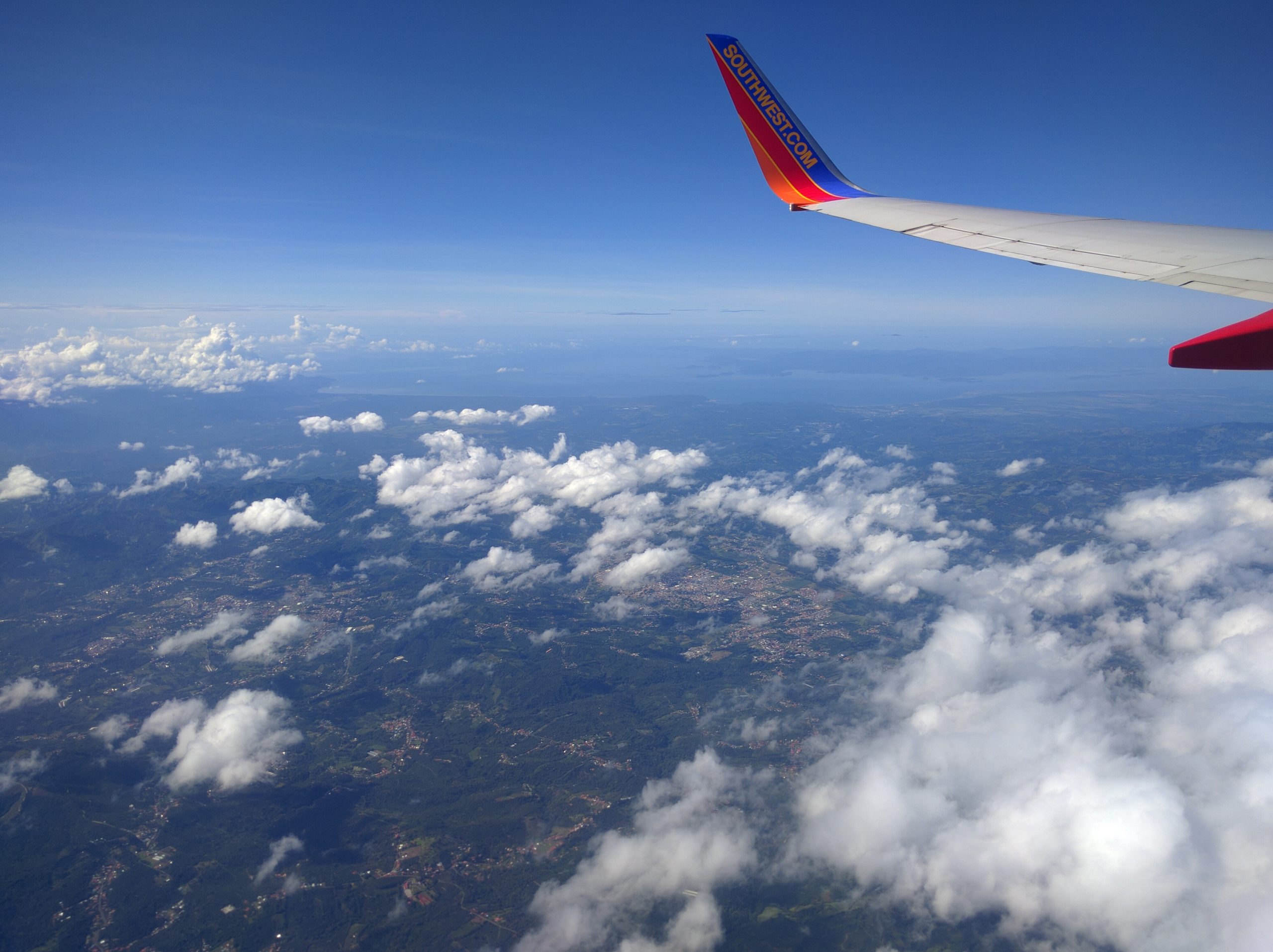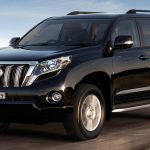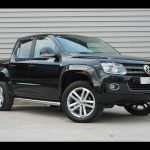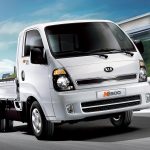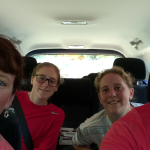As Americans, albeit fairly well traveled Americans, one typically goes to another country with vague pre-conceptions of what it will be like even if you’ve been researching and planning a trip for a while (in our case, about 6 months). Here are a few things that surprised us about Costa Rica in November 2015:
- Restaurants were more expensive than anticipated with prices similar to what you find in most American cities. The local sodas (the C.R. version of a diner) were ₡4,000-₡5,000 per person for a meal while places catering to tourists and ex pats were more like ₡7,000-₡9,000. With exchange rates hovering around ₡525 per US$1, it’s easy to spend US$50 on lunch.
- Supposedly tipping isn’t customary, but many eateries levy a 10% Cargo por Servicio, particularly the gringo places. Some places may or may not list prices including the 13% Impuesto al Valor Agregado (IVA; commonly known as VAT in English speaking countries). Look for figures labeled “%SER” and / or “%IVA” at the bottom of your bill. The first night we totally blew it when we ate at a place run by some Europeans (I think French by the accent, but I didn’t confirm) and tipped on top of the 10% calculated against a total that already included the 10% SER and the 13% IVA. Oops.
- Beaches are not what you’re used to in the U.S. and other highly developed beach destinations. The jungle runs right up against the high tide line so depending on the time of day you might be practically in the trees when you hit the surf. We visited Playa Ballena, Playa Manuel Antonio and Playa Hermosa de Uvita (we thought the latter was nicest while Playa Manuel Antonio had the most amenities / biggest crowds / most guys hawking stuff).
- We spent the bulk of our time along the Costa Ballena. It’s pretty, umm, “rustic” that far south. There is basic shopping (grocery stores, gas stations, construction materials, etc.), but not much for retail. Restaurants are everywhere, however, provided you are willing to dive in and eat at a “soda”.
- On the other hand, Quepos (particularly the Manuel Antonio area along the cliff above the bay) is totally developed with wall-to-wall resorts, restaurants and night spots. If you like Cancún, Cozumel and the like, this might be good choice.
- We made a pit stop in Jacó for lunch and were not impressed. Maybe we needed to go deeper into town to find the nicer, more quaint parts of town, but not sure that even exists. I mentioned Jacó to the rental car shuttle driver when we picked up our car on the first day in San José and he made a sour face. I mentioned Uvita and Dominical and he exclaimed: “¡Buen! Numero uno.” I guess that tells you what folks from San José are looking for when they head to the shore.
- Parque Nacional Manuel Antonio is overrated, IMHO. The gang of White-faced Capuchin monkeys down at the beach were pretty cool (they sort of scamper around trying to steal food from tourists, not unlike critters in the big U.S. national parks), but it’s crowded and sort of expensive: ~US$100 for a family of four will cover admission and a guide if you drive a hard bargain on the latter. However, it’s hard to tell if hiring a guide is worth it. We didn’t and saw plenty of critters, but we had visited Hacienda Barú National Wildlife Refuge earlier in our trip, so we already had a morning of wildlife spotting experience in our back pocket. If you decide to go:
- Go early or go after 1:00pm. We got there at 10:00am and waited at least a half hour to get in (they must impose a maximum number of guests in the park). When we left about 1:00pm, there was no line. The park is closed on Mondays, but open all other days 7:00am to 4:00pm.
- You need to buy a ticket BEFORE you go into the main gates. We got to the entrance via an alley running down to the beach. The ticket office is the COOPEALIANZA bank about 100m northwest of the main gates (if you get to the Hotel La Posada on the north or Hotel San Bada on the south, you have missed it).
- Parking is a crap shoot and operated by local “entrepreneurs” dressed in khakis head to foot. They are not really associated with the park, but they play park rangers on TV. If you’re staying nearby, try the bus, otherwise go with the flow. We parked maybe 1 km from the park along the entrance road to Playa Manuel Antonio. Lots of people around, lots of traffic, low likely of a break-in and the lady running the operation there was pretty official looking.
- The mobile phone coverage was surprisingly good. We use T-Mobile USA and as of this writing they have mobile roaming agreements in ~140+ countries that allow unlimited data (wow!) and SMS text with voice charged per minute ($0.20 per minute). I remember a time where folks would tell stories about failing to turn off their data connection and coming home from a week abroad to a US$500 roaming bill. No longer. At our rental house in the hills above Uvita we had 5 bars with Movistar (the local affiliate of Spain’s Telefónica) at 3G speeds.
- Real estate prices were higher than expected for an area this far from an airport. While only 211 km from Alajuela to Uvita, it’s all two lane roads (tarmac) and took 3-4 hours to drive with lots of little towns and agricultural traffic. In other words, not a quick trip and not a ton of amenities in the area. Google around for “costa ballena real estate” or “uvita real estate” and you’ll find some amazing properties, but nothing priced such that you’d think: “What a bargain!”
- There aren’t many places in rural areas that have addresses. Locations are often specified in GPS coordinates or in relation to a well known landmark. A typical address might be “50 Meters West of BCR in Uvita” where “BCR” is the local Banco de Costa Rica building.
- Speaking of banks, we went into the Banco de Costa Rica in Uvita. First, we had to be let into the secure bank lobby by two guys with guns. Then we had to take a number and wait. When our turn arrived, the teller was behind what I assume was bullet proof glass. To exchange dollars for colónes, I also had to provide my passport (which, fortunately, I had with me). Finally, the end result was that I swapped US$440 for ₡231,440 mostly in ₡10,000 bills. It was a Friday afternoon when I did this and there were a lot of folks wandering around outside the bank (payday?), so needless to say, I was a bit nervous walking out of the bank as the armed guards locked the door behind me with a giant wad of cash in my pocket.
- The ocean was warm and the rain forest much less buggy than anticipated (but the bugs they had tended to be bigger).
- I really liked our 2016 Toyota Land Cruiser Prado rental (looks a lot like the Lexus GX460). We drove out of the rental car place with 40 km on the clock and returned it with just under 1,000 km driven over a 7 day trip. Comfortable, good visibility, not too big and decent mileage for that type of vehicle. It had an automatic transmission with a turbo diesel. Basic interior (cloth seating and aftermarket stereo head unit, but with power windows and locks). Rode like a truck, but I also never felt unsafe on any of the rock roads we drove, some of which were steeper than the scariest streets of San Francisco.
- Toyota is easily the most common brand on the road with a fair number of Nissan’s and Mitsubishi’s running around. I also saw a pretty cool looking VW Amarok crew cab pick-up. American brands are pretty uncommon unless it’s a pick-up, although I did see a couple Ford Mustangs in San José. Peugeot and Citroen probably have a bigger footprint than U.S. manufacturers. Cutest? Had to be these little white KIA K2700 work trucks popular with construction crews, delivery companies and the surfer crowd.
- There were more European tourists than I’d have guessed given their access to some warm and exotic destinations in Asia and Africa. Mostly English, German, Dutch and French, and I suppose there were some Spaniards, but they didn’t stand out since I can’t tell the difference in accent between a Spaniard speaking Spanish and a local.
- The time zone is REALLY nice. Perhaps one of their greatest advantages over destinations further south or west (e.g. Hawai’i). We were only +1 from Denver. During DST, we’re on the same time zone. And with about 8 hours of travel time from Denver to San José, it’s pretty low key traveling.
- There are lots of English speakers, even out in the boonies where we stayed, so it’s a great foreign destination if your Spanish is minimal and / or you aren’t a brave traveler.
- It’s a rain forest, stoopid: super humid! Make sure your sleeping quarters have A/C as the sticky gets old by the end of the day (unless you are used to it, which we weren’t / aren’t). When we went in late Nov, it was typically mid-70s at night with 100% humidity.
- At that latitude, it’s about 12 hours of light year-round, but sunrise is earlier in the day. We shifted our sleep closer to 9:30pm bed times and 5:30am wake-up to maximize sunlight. We also worked pretty hard to be home before sunset as getting caught in the jungle, in a downpour, in the dark (Streetlights? You jest.) is a little disconcerting.
- Learn to appreciate the geckos. They eat the no-see-um size bugs that might otherwise be eating you.
- Want to know how all the tiny Central American countries keep up with the United States’ 330 million when it comes to soccer? I will tell you. Every urban barrio and rural pueblo has a soccer pitch as its town square. Every escuela has a field. Every plantation sponsors a team and has a field. Fútbol, fútbol, fútbol. It’s what they do. Also, don’t mention the World Cup qualifying game between Costa Rica and the U.S. played in Denver in on March 22, 2013 during a snow storm. I was at that game and it should NOT have been played, so I get it. A dark day in U.S.-Costa Rica international relations :-/.
- Final notes. You should stay at an all-inclusive with round-trip airport transportation if you:
- Are uncomfortable driving on rough rock (not gravel) roads blasted out of the rainforest covered mountains, driving in a tropical downpour, over-taking slower traffic on two lane roads or you get stressed out in heavy traffic. For more on Costa Rica driving, go here: Costa Rica Notes: Travel Logistics
- Don’t enjoy shopping in a local grocery that may or may not have the goods or brands you are looking for, with all the prices in another currency and employees that may or may not have any idea what you are asking them.
- Aren’t willing to give your weak Spanish a work out.
